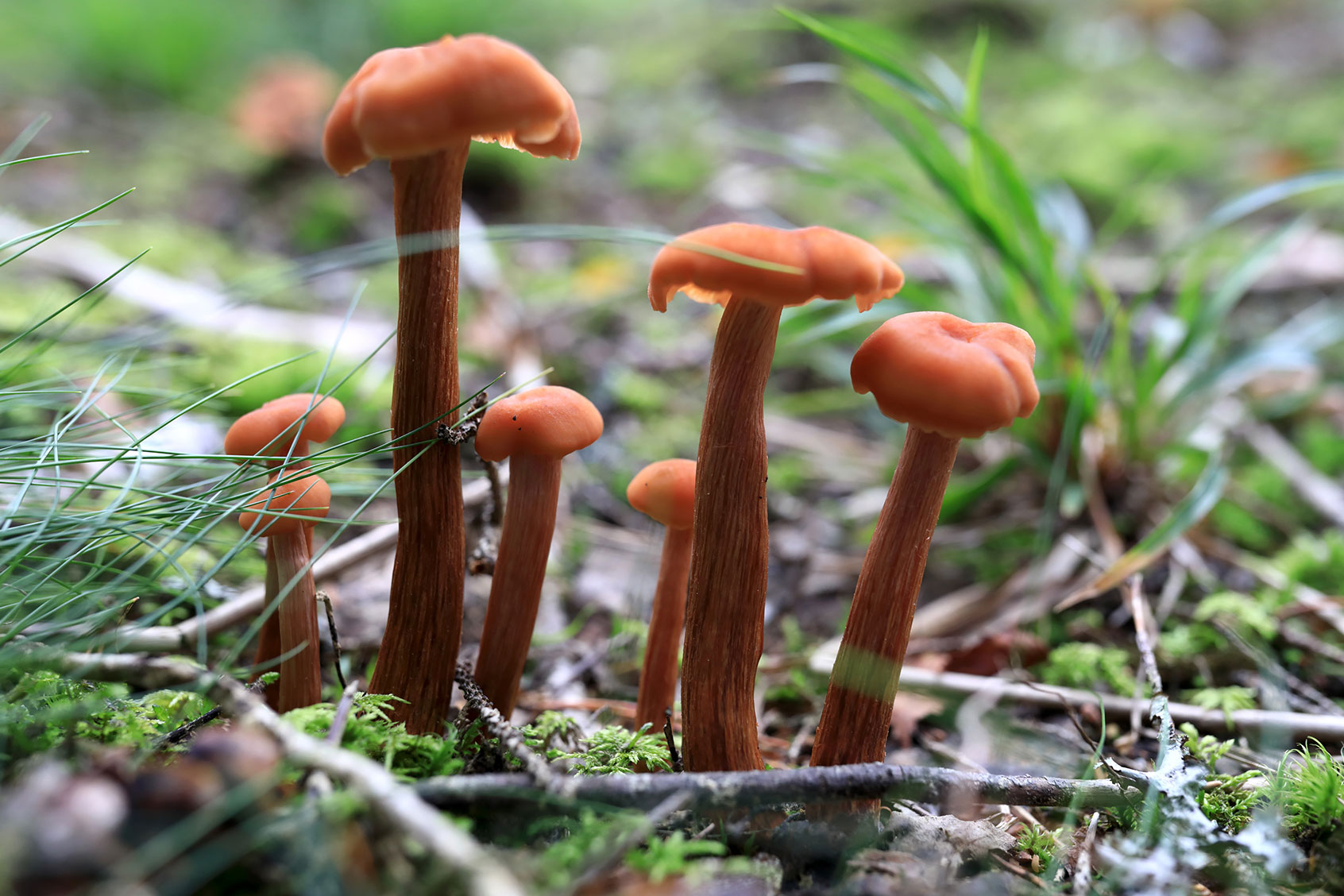What has no eyes, ears, brains or nerves, but still manages to talk?
The answer is mushrooms — which, despite appearing docile and still as plants, are most definitely not, as they do not even photosynthesize. Yet these inanimate fungi have incredible ways of communicating that researchers are only beginning to understand.
A new study in the journal Fungal Ecology found that a certain breed of mushroom seems to “talk” using electrical signals — and intriguingly, they get especially chatty after a nice rain. The way they talk after the weather — perhaps about the weather? — has not been reported before.
To study this, a team of Japanese researchers inserted subdermal needle electrodes into the caps and stipes of a type of mushroom called Laccaria bicolor. It’s also known as the “deceiver” mushroom because once it ages and fades, it can be hard to identify.
Mushrooms are essentially the fruit of certain fungi, which spend most of their life underground forming webs called mycelium. When a fungus wants to reproduce, it forms mushrooms that drizzle spores, which are akin to seeds in plants. Mushrooms can arise in a multitude of weird shapes and forms, from resembling bird’s nests to dog’s noses. In the case of L. bicolor, they are a roasted peach color on the cap with distinctive lilac gills. These mushrooms are known as ectomycorrhizal fungi, which means they form symbiotic relationships with forest trees.
On a mild, September day in 2021, the researchers entered a forest dominated by Japanese red pine (Pinus densiflora), jolcham oak (Quercus serrata) and loose-flowered hornbea (Carpinus laxiflora) where they found clusters of L. bicolor sprouting around their roots. These mushrooms form protective sheaths around the roots of trees and exchange nutrients with the trees, without which, they couldn’t survive.
The team, led by Yu Fukasawa from Tohoku University, inserted a tangle of wires into six mushrooms. The end result looked like a weird DIY synthesizer project. (People do make noise music using mushrooms, so perhaps not a far-off comparison.) When the wires were installed, it had not rained in about two weeks. The next day, on October 1st, a typhoon rolled through, dropping about 30 millimeters of rain.
Even this small level of precipitation was enough to create voltage spikes in some of the mushrooms. What’s more, the mushrooms seemed to transfer this energy underground through mycelial networks to its neighbors, which could be analogous to a sort of communication. In other words, mushrooms seem to get chatty, especially after rainfall.
“In the beginning, the mushrooms exhibited less electrical potential, and we boiled this down to the lack of precipitation,” Fukasawa said in a statement. “However, the electrical potential began to fluctuate after raining, sometimes going over 100 mV.”
100 mV, or millivolts, is a unit of electrical potential equal to one-thousandth of a volt, or 0.001 volts. It may not seem like much, but it’s a lot for a mushroom.
Want more health and science stories in your inbox? Subscribe to Salon’s weekly newsletter The Vulgar Scientist.
Previous research has demonstrated that mushrooms can sort of talk to each other using electrical signals, although experts still debate whether this is really what we might call language or not. As Salon previously reported, Andrew Adamatzky, a computer scientist at the Unconventional Computing Laboratory at the University of the West of England, Bristol, used sub-dermal needle electrodes to record electrical impulses from four different fungi: ghost, enoki, split gill and caterpillar mushrooms.
The research, which was published in the journal Royal Society Open Science, noticed spiking patterns in these electrical impulses. However, this research remains controversial.
“Human exceptionalism with regard to language was already countered by bees and ants and plants,” Adamatzky told Salon. “I bet all creatures have their own language. Following [Noam] Chomsky’s universal grammar, we could probably discover in future that all living creatures have similar underlying grammars.”
Nonetheless, Adamatzky’s experiments were done in the lab. Fukasawa’s more recent research was the first to demonstrate this sort of communication in the wild and showed that it changed after the rain.
Other factors could explain the surge in voltage, including the physical impact of raindrops on the mushrooms. To make sure, Fukasawa and his team repeated the experiment using “dummy” mushrooms made from melamine sponges (sometimes sold as “magic’ erasers.)
“The result shows that the direct effects of raindrops on the electrical potentials are negligible,” the authors reported. Nonetheless, they outline many ways in which future research can more clearly unravel what’s happening, including by blocking sunlight on the mushrooms and using artificial rainfall of different strengths, ion concentrations in the water or even gel beads “would be worth performing to check the physical and chemical effects of water droplets on electrical potential of living mushrooms.”
Do mushrooms really talk in a way that could be compared to human language? The jury is still out. Notably, research into how fungi communicate using electrical signals is still very much in its infancy — but it is clear there is much to be learned about fungi and their life cycles. From psilocybin mushrooms being used to treat mental illness to pathogenic fungi that could trigger the next pandemic, fungi still have much to reveal about life on Earth.

